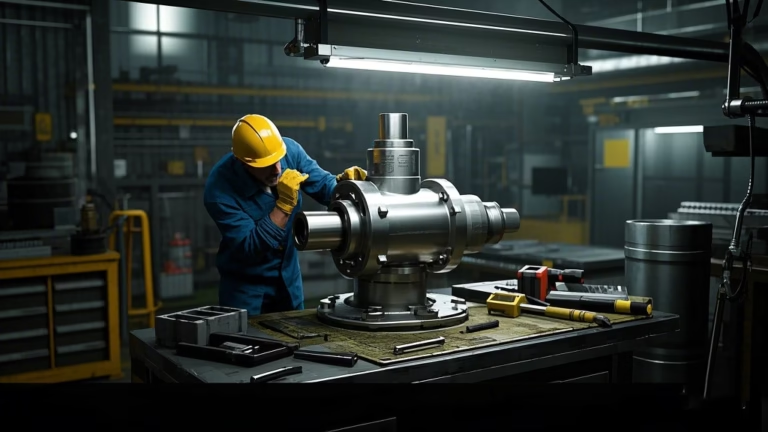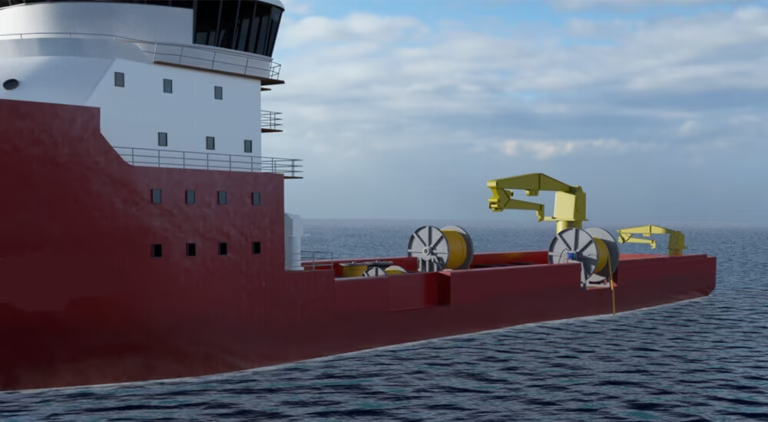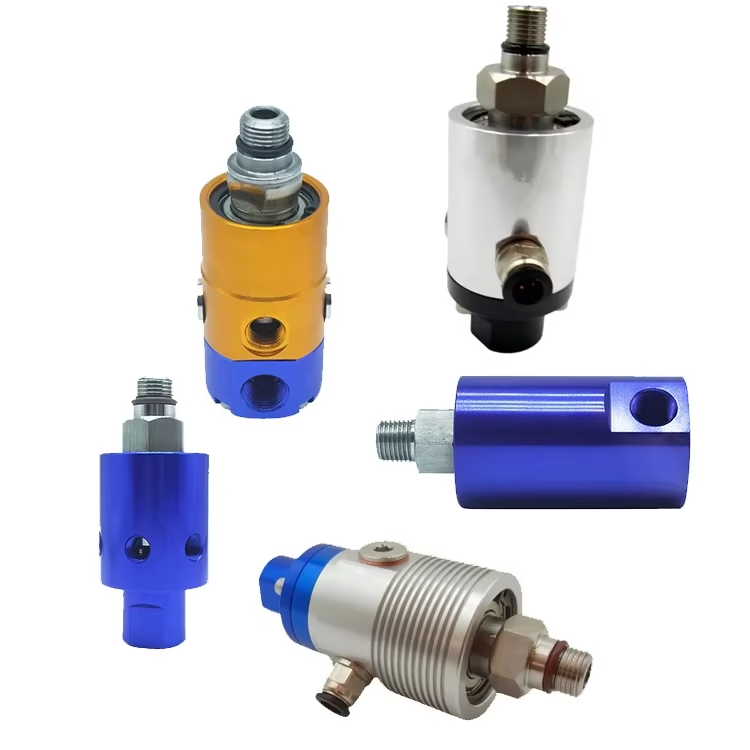How to Choose the right rotary pressure joint for your application?
Selecting the appropriate high-pressure rotary joint is crucial for ensuring the efficiency, reliability, and longevity of industrial machinery. These components, also known as rotary unions or swivel joints, facilitate the transfer of fluids or gases between stationary and rotating parts under high-pressure conditions. A comprehensive understanding of the key specifications and considerations involved in their selection is essential for optimal performance. However, selecting the right high-pressure rotary joint requires a deep understanding of technical specifications that align with operational demands. This comprehensive guide explores the essential factors to consider, ensuring optimal performance and longevity in even the most demanding environments.
High-pressure rotary joints are mechanical devices designed to transport fluids or gases from a stationary source to a rotating component. They are integral in various industrial applications, including manufacturing, power generation, and processing industries, where they enable the controlled transfer of media under elevated pressures. Their robust design and specialized features ensure efficient and safe operation even in demanding environments.
Key Specifications to Consider
When selecting a high-pressure rotary joint, several critical specifications must be evaluated:
1. Pressure Rating: Matching Operational Pressures
The most fundamental specification of a high-pressure rotary joint is its pressure rating, which defines the maximum pressure it can safely handle during operation. This parameter is critical because exceeding the rated pressure can lead to seal failure, leakage, or catastrophic mechanical damage.
1.1 Why It Matters
Industry Variability: Different applications demand varying pressure thresholds. For example, hydraulic systems in excavators might operate at 3000–5000 PSI, while oil and gas refining processes could require up to 10,000 PSI or more.
Safety Margins: Manufacturers typically provide a working pressure and a burst pressure rating. Opting for a joint with a working pressure 20–30% higher than the system’s maximum operational pressure ensures a safety buffer, especially for systems with pressure spikes.
1.2 Maximum Pressure Rating
Different rotary joints are engineered to withstand varying levels of pressure, ranging from relatively modest ratings of 150 PSI (10 bar) to extremely high ratings exceeding 5700 PSI (400 bar). Specialized high-pressure rotary unions designed specifically for demanding fluid applications can handle pressures up to 5700 PSI while maintaining operational integrity. The maximum pressure capability directly correlates with both the physical construction and the materials employed in manufacturing the rotary joint.
1.3 Pressure Variations by Application Type
The pressure requirements vary significantly based on the application and the medium being transferred:
Water and oil applications typically support higher pressures, with specialized models handling up to 5700 PSI (400 bar)
Air and vacuum applications generally operate at lower pressures, usually around 150 PSI (10 bar)
Steam applications often require specialized configurations rated for approximately 120 PSI (8 bar)
When selecting a rotary joint, engineers must account for not only normal operating pressure but also pressure spikes, surges, and long-term pressure cycling that may affect the joint’s performance and lifespan. Selecting a joint with an appropriate safety margin above the maximum expected operating pressure is considered best practice.
1.4 How to Evaluate
Consult the manufacturer’s datasheet for clear pressure ratings, ensuring they are certified to international standards (e.g., ASME, ISO).
Account for dynamic pressure fluctuations; systems with intermittent high-pressure surges need joints with robust pressure compensation designs.
2. Media Compatibility: Ensuring Chemical and Physical Stability
The rotary joint must be compatible with the type of fluid or gas it will transfer. Compatibility prevents chemical reactions that could degrade the joint’s materials or compromise the seal integrity. Common media include oil, hydraulic fluids, water, glycol, and steam. The fluid or gas being transferred—whether it’s hydraulic oil, steam, water, chemicals, or abrasive materials—dictates the compatibility of the rotary joint’s materials. Incompatibility can lead to corrosion, material degradation, or seal failure, compromising performance.
2.1 Key Considerations
2.1.1 Material Selection
Materials used in the construction of the rotary joint affect its durability and resistance to corrosion. Stainless steel is commonly used for its strength and corrosion-resistant properties, especially in harsh environments.
Metals: Stainless steel (e.g., 316 SS) is ideal for corrosive media like seawater or acidic solutions; alloy steel offers high strength for heavy-duty applications.
Seal Materials: PTFE (Teflon) is chemical-resistant but may not suit high-temperature steam; graphite-based seals excel in high-temperature, dry environments; engineered polymers like polyurethane are suitable for oils and greases.
2.1.2 Contamination Risks
For food or pharmaceutical industries, materials must be FDA-compliant to prevent product contamination.
2.2 Practical Tips
Provide the manufacturer with detailed media properties: chemical composition, viscosity, and any additives.
Test materials with the target fluid in a controlled environment, especially for rare or aggressive substances.
3. Temperature Resistance: Withstanding Thermal Extremes
Operational temperatures, both of the media and the environment, significantly impact a rotary joint’s performance. Thermal fluctuations can cause material expansion/contraction, seal hardening, or lubricant degradation.
3.1 Design Factors
Temperature Range: High-pressure rotary joints must handle both continuous operating temperatures and short-term thermal shocks. Operating temperature influences the selection of materials and seals within the rotary joint. Ensure the joint can withstand the temperature extremes of your application to maintain performance and prevent material degradation. For example, steam applications may require resistance up to 300°C, while cryogenic systems need materials that remain ductile at -100°C.
Material Thermal Properties:
Metals like Inconel offer excellent high-temperature strength.
Seals made from fluorocarbon (FKM) balance high-temperature resistance and chemical compatibility.
3.2 Best Practices
Specify the minimum and maximum temperatures, including transient conditions (e.g., start-up/shutdown cycles).
Ensure bearings and lubricants are rated for the temperature range to avoid seizure or excessive wear.
4. Bearing Design: Enabling Smooth Rotation Under Load
Bearings support the rotational movement and affect the joint’s load capacity and lifespan. Precision-engineered bearings, such as rolling elements or hydrostatic designs, accommodate radial and axial loads while facilitating smooth rotation.
Bearings in high-pressure rotary joints support radial and axial loads, ensuring low-friction rotation while maintaining alignment. The choice of bearing type depends on load magnitude, speed, and environmental conditions.
4.1 Common Bearing Types
Rolling Element Bearings (ball or roller bearings): Suitable for moderate speeds and loads; require regular lubrication to prevent wear.
Hydrostatic Bearings: Use a pressurized fluid film to support loads, ideal for high-speed, low-friction applications (e.g., precision machinery).
Journal Bearings: Simple and cost-effective, but less suitable for high radial loads.
4.2 Selection Criteria
Load Analysis: Calculate radial (e.g., misalignment forces) and axial (e.g., fluid pressure thrust) loads using engineering diagrams or manufacturer guidelines.
Speed Ratings: High-speed applications (e.g., rotating shafts exceeding 5000 RPM) require bearings with low friction and balanced designs to minimize vibration.
5. Seal Design: Preventing Leakage in High-Pressure Environments
Seals are the most critical component for maintaining a leak-proof connection. High-pressure environments demand seals that balance durability, flexibility, and resistance to abrasion and chemical attack.
Effective sealing is vital to prevent leaks and ensure safe operation. Advanced seal technologies, such as mechanical seals, O-rings, or lip seals, are employed based on pressure, temperature, and media type. High-performance seals made from materials like PTFE, graphite, or engineered polymers ensure leak-proof operation even under immense pressure.
5.1 Seal Types
Mechanical Seals: Consists of a rotating and stationary face (e.g., tungsten carbide vs. carbon) with a fluid film for lubrication; ideal for high pressures and temperatures.
Lip Seals: Simple and cost-effective but less suitable for extreme pressures; common in low-speed, clean environments.
O-Ring Seals: Versatile but prone to extrusion at high pressures; often used in combination with backup rings.
Labyrinth Seals: Non-contacting seals that prevent debris ingress are often paired with primary seals for harsh environments.
5.2 Design Features
Balanced vs. Unbalanced Seals: Balanced seals equalize pressure on the sealing faces, reducing wear at high pressures.
Multi-Lip or Multi-Passage Seals: For systems transferring multiple media, ensuring no cross-contamination.
6. Material Construction: Durability for Harsh Environments
The choice of materials for the joint’s body, shaft, and internal components directly impacts its lifespan, especially in corrosive, abrasive, or high-temperature settings.
6.1 Key Materials
Metals:
Stainless Steel: Corrosion-resistant, suitable for water, chemicals, and food-grade applications.
Alloy Steel (e.g., 4140): High tensile strength for heavy loads and high-pressure systems.
Nickel Alloys (e.g., Inconel): Exceptional resistance to high temperatures and oxidation (e.g., steam or gas turbines).
Polymers and Composites:
PTFE: Low friction and chemical resistance, often used for seal faces or linings.
Carbon Graphite: Self-lubricating and heat-resistant, ideal for dry-running conditions.
6.2 Environmental Factors
Abrasive Media: Use tungsten carbide or ceramic coatings to protect against particle erosion.
Marine or Coastal Environments: Opt for duplex stainless steel or titanium to resist chloride-induced corrosion.
7. Rotational Speed and Dynamic Balance
Rotational speed affects bearing friction, seal wear, and overall heat generation. High-speed applications require joints with precise balancing and low-vibration designs. The maximum rotational speed, measured in revolutions per minute (RPM), affects the joint’s performance and longevity. High-speed applications require joints designed to operate efficiently at elevated RPMs.
Design Considerations
Critical Speed: Avoid operating near the joint’s natural resonant frequency to prevent catastrophic vibration.
Balance Quality: High-speed joints (e.g., over 3000 RPM) should be dynamically balanced to ISO G2.5 standards.
Lubrication: High-speed bearings may require synthetic lubricants with high thermal stability (e.g., polyalphaolefin, PAO).
8. Installation and Mounting Configuration
Proper installation is essential for alignment, load distribution, and ease of maintenance. Mounting configurations vary by application, including through-shaft, flange-mounted, or cartridge-style designs.
8.1 Key Factors
Alignment: Misalignment (angular, radial, or axial) can cause excessive bearing loads and seal wear; use laser alignment tools during installation.
Space Constraints: Compact designs are critical for machinery with limited radial or axial space (e.g., robotic arms, wind turbine hubs).
Connection Types: Threaded, flanged, or welded connections must match the system’s piping standards (e.g., NPT, BSP, ANSI flanges).
8.2 Manufacturer Guidelines
Follow torque specifications for fasteners to avoid over-tightening, which can distort seals or damage threads.
Use flexible hoses or bellows to minimize stress on the joint from piping movements.
9. Maintenance Requirements: Ensuring Longevity
Even the most robust rotary joints require regular maintenance to sustain performance. Proactive care reduces downtime and extends service life.
9.1 Routine Practices
Inspections: Regularly check for leaks, unusual noise, or temperature spikes, which may indicate seal wear or bearing failure.
Lubrication: Follow the manufacturer’s schedule for re-lubricating bearings, using compatible greases or oils.
Seal Replacement: Replace seals at recommended intervals, especially in high-wear environments; keep spare parts on hand for critical systems.
9.2 Condition Monitoring
Use IoT sensors to track vibration, temperature, and leakage in real time, enabling predictive maintenance.
Maintain detailed logs of maintenance activities and component replacement dates.
10. Industry-Specific Applications and Standards
Different industries have unique requirements that influence specification choices:
10.1 Heavy Machinery (e.g., Excavators, Cranes)
Prioritize high load capacity, rugged materials (alloy steel), and seals resistant to hydraulic oil degradation.
Example: Deublin’s 2620-600-252 model features dual balanced seals and precision ball bearings for clamping systems, ensuring low torque at maximum pressure.
10.2 Steam and Power Generation
Require high-temperature resistance (graphite seals, Inconel components) and pressure ratings up to 2000 PSI.
Compliance with ASME BPVC Section VIII for pressure vessels is essential.
10.3 Petrochemical and Oil & Gas
Demand materials resistant to aggressive chemicals (e.g., hydrogen sulfide) and extreme pressures (up to 15,000 PSI).
NACE MR0175 compliance is critical for sour gas environments.
10.4 Food and Pharmaceuticals
Use FDA-approved materials (316L stainless steel, PTFE seals) and hygienic designs to prevent contamination.
Application Considerations
High-pressure rotary joints are utilized across various industries, each with unique requirements:
Heavy Machinery: In hydraulic systems of excavators and cranes, rotary joints enable precise control and power transmission through pressurized fluids.
Steam Applications: They play a vital role in steam distribution systems for power generation, ensuring efficient energy transfer and controlled steam flow at high pressures.
Industrial Manufacturing: Rotary joints facilitate controlled fluid movement in processes like pulp and paper production, steelmaking, and chemical processing.
Energy and Petrochemical Industries: They are crucial in oil and gas exploration and refining, enabling safe and efficient transfer of fluids under extreme pressures and temperatures.
Case Study: Optimizing a High-Pressure Rotary Joint for a Steel Mill
A steel mill operating a hot-rolling line faced frequent seal failures due to high-temperature steam (250°C) and abrasive scale particles. The solution involved:
Upgrading to tungsten carbide seal faces for abrasion resistance.
Using Inconel shafts to withstand thermal cycles.
Installing labyrinth seals to protect bearings from scale ingress.
Implementing a predictive maintenance schedule based on vibration analysis.
The result: a 40% reduction in downtime and a 25% extension in joint lifespan.
Conclusion: Prioritizing Performance Through Precision
Selecting a high-pressure rotary joint requires a systematic evaluation of specifications, from pressure ratings and media compatibility to bearing design and maintenance needs. By aligning these factors with operational demands, industries can enhance safety, reduce downtime, and optimize fluid transfer efficiency. Remember, the best joint is not just the most expensive or technically advanced but the one that perfectly matches your system’s unique challenges.







